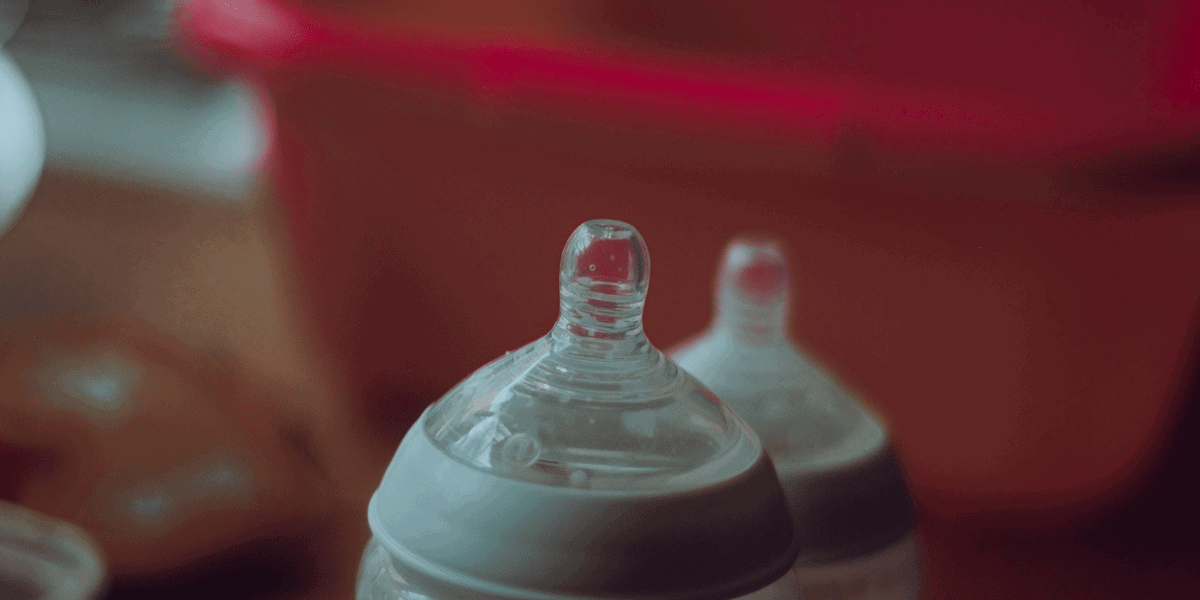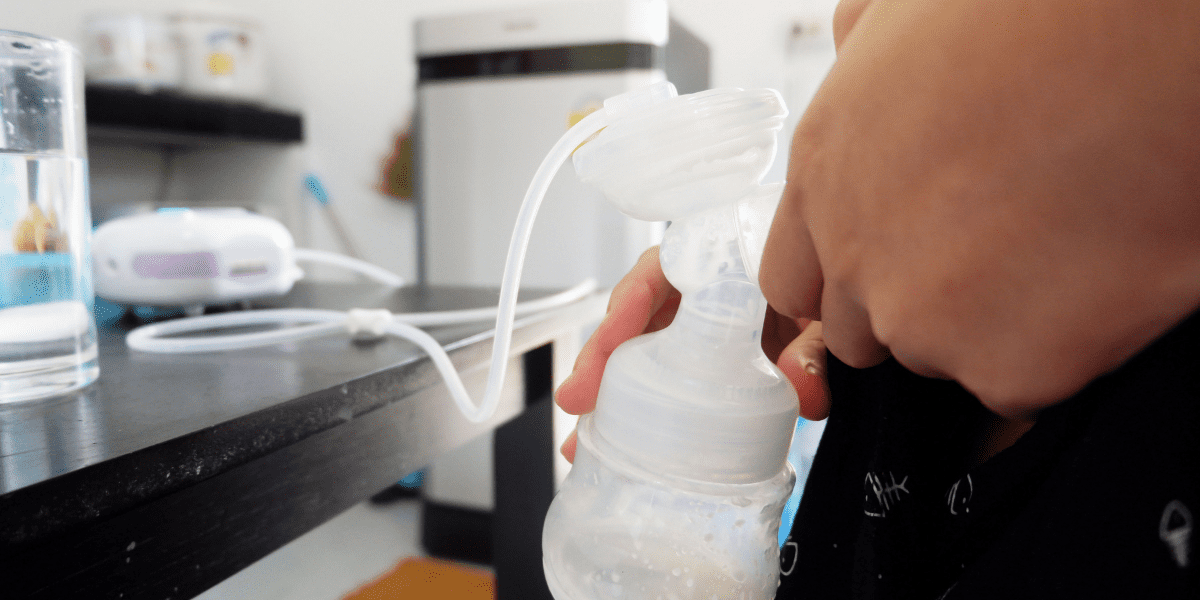Your pregnancy was long and most likely scary but here you are with two beautiful babies. Your gorgeous little ones are cute and cuddly and exhausting!
One baby can give a mother gray hairs but with twins, everything literally doubles! You might consider the hassles of breastfeeding two babies too much for you and that’s fine. Here are a couple of things that will help on your journey of exclusively pumping for twins.
As an Amazon Associate, I earn from qualifying purchases. The links below maybe affiliate links. Please read my disclosure policy for more information.
Understand The Task
To be able to satisfy your babies with enough milk, you need to know what exactly you’re getting into. You need to be mentally prepared for juggling other chores and possibly a job with endless rounds of bottle washing and having to figure out storage options and feeding schedules for two.
This shouldn’t scare you though. There are a lot of success stories out there of people who raised twins this way. Also, you get to easily ask for help with feedings from anyone around you so you can catch a nap or get some work done.

Producing Enough Milk
One worry most new mums of multiple babies have is whether or not they are capable of producing enough milk for both babies. The answer is a resounding Yes!
Your body produces the hormone Prolactin in your pituitary gland to trigger milk production in your body. Whenever a baby sucks on your breasts, more prolactin is produced from the pituitary gland and more milk is produced. This is a cycle that still applies even if your nipple stimulation comes from pumping.
The more you pump milk for the twins, the more your milk comes in. This is why your first few months will have you pumping almost constantly even if you have what seems like enough milk stored.
Dealing With Delayed Supply
Some new mothers face problems producing milk in the first few days after their twins are born. While you can’t wait to get straight into feeding your babies, your body might need time to get the memo. There are a couple of reasons why this happens.
Often, twins come into the world a little earlier than planned. The bulk of twin babies are born before 37 weeks and might not have been born through natural delivery.
A few mothers get to their full term and have vagina births but the majority often have an unplanned C-section birth. These minor complications could mean that your milk takes a bit of time to come in. Thankfully, it gets better as time passes.

Even when your body starts to catch up with reality, pumping may still feel like a lot more work than needed but you need to start. Your milk may be slow but you need to activate the cycle so it can get better.
One way to help get your pumping to speed up is body contact. Having skin-to-skin contact with your babies will help your hormones stimulate milk production and get you pumping.
If your baby has to have a stint in the neonatal intensive care unit, you need to get your doctor’s advice on the best way to get the bonding time you need. If you decide to start with combining breastfeeding and pumping before switching to exclusive, don’t forget to pump between feeds. It also keeps your supply on the increase.
Portion Control
You probably decided on this journey without many guides but now you’re wondering just how much milk your twins need you to pump. Your babies will most likely have very peculiar feeding needs as they are two unique individuals.
If you had identical twins, they may have needs that are more similar especially when compared to fraternal twins.
The best way to determine how much more or less milk you need to pump to feed your babies is to get your health practitioner involved.
They will help keep an eye on the babies and measure their weight against their expected growth rates. This and other signs like the number of diapers you change per day will give you an idea of changes to make to your babies’ feeding portions.
Generally, you may want to aim for establishing a milk supply for your twins that will produce up to 50-60 ounces a day which makes 3-5 ounce bottles for 4-10 feeds daily for 2 babies.
Establishing Supply
Now your milk has come in but you need to learn how to get your milk from your body and into your baby. This is done with the help of another pituitary hormone called oxytocin. Oxytocin is triggered when suckling or pumping happens, just like prolactin. What it does is stimulate your milk glands to contract and push the milk into the breast through your milk ducts. This process is called the let-down reflex.
Once the milk has been let down, a suckling baby will typically settle into stronger and slower pulls. For a pumping mother, you have to program your pump to do the same on your breasts.
When pumping with an electric hospital-grade breast pump, you want to begin on suckling mode. This gives you lighter suction and about 70 cycles per minute which is quite fast.
After the milk “lets down” and starts to flow, you need to activate drinking mode where you get stronger suction. The cycles also slow down to about 54 per minute.
Your first pump needs to be done soon after your birth if you can handle it. Once your body is ready, you should get to pumping at about 6 hours after birth.
For the first month, you might have to go pump up to 10 times a day which is about every 2-3 hours. This is a little intense for your body but necessary for your little ones.
Another good tip is to get a few good pumping sessions in between 10 pm and 6 am which is when Prolactin peaks.
Your mature milk should come in about three days after birth and until then, your baby will enjoy Colostrum (the transitional milk).
Once your milk starts coming in, you need to pump until your breast feels completely empty. This might not be easy so soothing your breast with a warm washcloth and applying compressions will help empty you out easily.
A great way of stimulating your body to produce extra milk is to pump for two minutes after you are emptied out. Over time, this should gradually increase to five minutes after emptying.
Considering Time
Every 2 to 3 hours seems to be a daunting schedule for pumping so now you’re wondering just how long you’ll need to pump for. In estimation, 25 minutes is often enough for a complete pumping cycle.
This owes to the fact that this is how long it typically takes a baby to eat. You may experience needing less than that as some people have worked with as low as 15 minutes per pumping.
Often, reducing time in pumping sessions starts as soon as 6 weeks postpartum. By this time, the milk supply is likely completely established. Your new schedule will depend on your individual preferences but you could work 6 to 8 times a day for 15-20 minutes.
If reducing the time spent starts to hurt your supply, increase the frequency of your sessions until you find a sweet spot that makes you comfortable.
Your Body’s Needs
Exclusively pumping mothers must remember that they are not machines and so need to keep their bodies in top conditions. Here are a few things to remember.
Hydration
Every new mum needs to keep their water levels up when producing milk as low hydration will hurry you and your supply. Individual needs have to be considered here but most mothers say that a daily intake of 3 liters of water helps a lot.
Always try to keep a bottle of water around your pumping station to help you remember. You may also want to set alarms to remind you and keep an eye on your intake.
Snacking is Good
Walking around with a snack in your hand helps keep your energy up. Snacking should not replace eating meals with as many calories as you need (which will increase by the way) but a healthy snack goes a long way in keeping mum active.
Rest
Learn to put your feet up while you pump. Even when not pumping, accept help with certain chores and don’t try to be a superhero. You’re already doing enough just by pumping.
Organize
One last thing that will help your pumping journey would be some sort of organizing hack. You may want to make a list of things you will need such as extra valves or nursing clothes and paste them on the wall near your bags.
Organization apps will also help you set reminders and keep you from looking frazzled when you have to pump on the go.
Remember, don’t overthink the process. There are support groups ready to help with your questions so don’t hesitate to reach out and ask questions when you need to.












